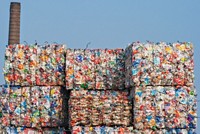Advertisement
Grab your lab coat. Let's get started
Welcome!
Welcome!
Create an account below to get 6 C&EN articles per month, receive newsletters and more - all free.
It seems this is your first time logging in online. Please enter the following information to continue.
As an ACS member you automatically get access to this site. All we need is few more details to create your reading experience.
Not you? Sign in with a different account.
Not you? Sign in with a different account.
ERROR 1
ERROR 1
ERROR 2
ERROR 2
ERROR 2
ERROR 2
ERROR 2
Password and Confirm password must match.
If you have an ACS member number, please enter it here so we can link this account to your membership. (optional)
ERROR 2
ACS values your privacy. By submitting your information, you are gaining access to C&EN and subscribing to our weekly newsletter. We use the information you provide to make your reading experience better, and we will never sell your data to third party members.
Petrochemicals
Chemical executives use unexpected forum to talk diversity, the environment
The World Petrochemical Conference branches out this year beyond markets and prices
by Alexander H. Tullo
April 4, 2021
| A version of this story appeared in
Volume 99, Issue 12



Held each March, IHS Markit’s World Petrochemical Conference is normally all about market intelligence. Chemical executives have attended the conference for decades to hear forecasts of polyethylene demand, get the status on big ethylene projects, or learn about how developments in oil and gas will affect their businesses.
Because of the COVID-19 pandemic, the conference was for the second time held virtually instead of in packed hotel ballrooms in Texas.
But beyond the format, the content of the conference had a new twist: sustainability and diversity were two of the biggest themes.
Both topics have always gotten nods at the conference, especially in talks from high-ranking industry leaders. But this year, diversity and sustainability dominated entire sessions, a sign perhaps that the industry’s executives now consider these issues as important as prices and operating rates.
Dow CEO Jim Fitterling set the tone for the conference with his talk, which stressed the importance of diversity for an industry that strives to be innovative. “We need that diversity of thought and perspective in solving problems,” he said.
But Fitterling also warned that the pandemic has gravely set back diversity efforts. In the US chemical industry, for instance, women held over 37% of middle-manager positions in 2018 according to the US Equal Employment Opportunity Commission. “We already had a tremendous burden of achieving parity in the workplace,” he said. “All the data that we’re seeing shows that COVID has hit minority groups—women, people of color, the LGBTQ community, for example—harder than other groups,” he said of COVID-19’s impacts on health.
The unemployment rate of Black and Latina women rose 11% postpandemic, Fitterling said. He also pointed to a McKinsey & Co. study suggesting that 2 million women in the US are considering leaving the workforce because of COVID-19.
Fitterling warned that the pandemic could harden social and economic inequities for a long time to come. “If we don’t fix the problem now, we’ll continue to suffer from a lack of diversity, a lack of inclusion, and an economy that simply fails to deliver to society in an equitable way,” he said.
Executives gave prescriptions for addressing the problem. Lori Ryerkerk, the CEO of Celanese and one of only a handful of women in such a role at a US chemical company, said companies need to do more to increase diversity than focus on hiring. Recruiting people on college campuses or elsewhere is “the easy part,” she said. “The hard part is retaining people and creating that culture of inclusion.”
That might mean uncovering unconscious bias or training people in having uncomfortable conversations. Celanese, for example, has organized small-group discussions around episodes of 1619, the New York Times audio series about race in America.
Additionally, Ryerkerk said, employees need leaders who share their backgrounds. “People want to look up in the organization, and they want to see people and go, ‘If she could do it, I could do that too,’ ” she said.
To Ryerkerk, executives who get in the way of diversity are deadwood, even if they are great performers financially. “You need to get rid of the leaders who aren’t walking the talk, because we all keep leaders who are still in the old school,” she said.
Fitterling gained firsthand experience with the power of a culture of inclusiveness when he came out as a gay man while up for a promotion to chief operating officer. “I don’t want to be on the front page of a newspaper somewhere. I’d like to come out on my own, and I’d like it to be my own story,” Fitterling said he told his then boss, Andrew Liveris, who encouraged him to speak with every member of Dow’s board.
“I went and visited them one by one,” Fitterling recalled. “And to a person, they all said to me, ‘This is the exact right thing to do. We support you. Glad that you’re doing it. And don’t ever look back.’ That’s the culture we have at Dow.”
Managers further compared notes during a forum on increasing the role of women in petrochemicals. “When a neophyte is part of the petrochemical industry, it can be quite intimidating,” said Janile Parks, director of community and government relations for the arm of Taiwan’s Formosa Plastics that is planning a massive petrochemical complex in Louisiana.
“I found out that most organizations lack the basic resources to reassure that a woman can navigate successfully in her role,” she said. “However, we’re expected to perform at the same or higher level as our male counterparts.”
Parks recommended that companies assign mentors for newer employees, develop management and training programs, and provide opportunities for employees to shadow their peers. “We should lean on the opportunity to hold the door open for other women who will come behind us,” she said.
Indeed, Justine Smith, senior vice president for petrochemicals at Chevron Phillips Chemical, cited sponsorship from high-level management when the moderator asked what advanced her career. “In the first 10 years of my career, I was continually put on slates and given opportunities for a variety of different positions,” she said.
For petrochemical companies, such special positions and projects are increasingly related to environmental performance. The conference reflected that shift, with chemical executives boasting about their firms’ environmental achievements even as many outside groups see companies’ efforts as mere greenwashing.
Over the decades, environmental performance has rarely featured in presentations at the IHS conference. When it did, the references were often related to prosaic matters like energy efficiency or emissions. But as the public became alarmed by mounting plastic waste, presentations started reflecting those concerns. A couple of years ago, pictures of beaches littered with plastics started appearing in the slide decks of chemical executives who insisted that they grasped the problem.
This year, nearly every plastics producer making a presentation had something to say about progress on waste, frequently sharing goals for incorporating postconsumer content in their resins. Dilip Kumar Agarwal, executive director of Indorama Ventures, said his company aims to use 750,000 metric tons (t) per year of recycled resin by 2025. Vipul Shah, COO for petrochemicals at Reliance Industries, said his company intends to recycle 1 million t of plastic annually by 2025.
Thomas Casparie, executive vice president of Shell Chemicals, told the audience that the industry ought to pursue climate change with the same enthusiasm as plastics recycling.
“The industry is stepping up to address the issue of plastic waste; clearly, there is more to do,” Casparie said. “It’s now time for the industry to unite around the issue of climate change and really look at how can we get to net zero.”
Shell, one of the world’s largest oil companies, plans to achieve net-zero carbon emissions by 2050, meaning it will have to both reduce and offset its greenhouse gas emissions. “That is going to be a huge task, and if you look at our current business plans, they will not get us there, so they will need to change over time,” Casparie said.
Shell plans a large transformation. It intends to consolidate its 13 refineries into 6 “energy and chemical parks.” This, Casparie said, will prepare the company to sell less conventional fuel over time and create hubs for supplying renewable energy and chemicals produced using alternative feedstocks.
And Shell has been rolling out individual projects to reduce its carbon footprint, Casparie said. In Moerdijk, the Netherlands, the company is replacing 16 ethylene steam cracker furnaces with 8 new ones, which will reduce emissions at the site by 10%. The company is part of a consortium that will build a 100 MW water electrolysis plant in Germany to make green hydrogen. Shell also aims to capture and store 25 million t of carbon dioxide per year and has projects underway at its facilities in Scotford, Alberta, and Rotterdam, the Netherlands.
Shell, while not a plastics maker, is active in plastics waste as well. It has been feeding a synthetic oil that Nexus Fuels derives from plastic waste into its petrochemical cracker in Norco, Louisiana. Casparie intends to expand the use of waste-plastic feedstock. “We’ve got projects in Europe and, most recently, a feasibility study with the government of Singapore,” he said.
Karen McKee, president of ExxonMobil Chemical, profiled a couple of her company’s initiatives in plastics recycling. In February, the firm formed the Cyclyx joint venture with Agilyx, a company that uses pyrolysis to break down polystyrene into styrene. Cyclyx aims to gather plastic waste in quantities adequate for recycling plants. “We feel that with our scale in the industry, that this is a very good partnership,” McKee said.
Also in February, ExxonMobil conducted a plastics recycling trial at its Baytown, Texas, plant, though it divulged few details. “It is a proprietary process, so I can’t tell you too much about it other than this will take sorted, end-of-life plastic directly into our existing facilities, so it is a little bit of a step-skipping process,” McKee said of the chemical recycling process.
If ExxonMobil, a company not known for ambitious environmental targets, is now entering assertively into chemical recycling, then surely the industry sees environmental progress as more than a mere sideline.





Join the conversation
Contact the reporter
Submit a Letter to the Editor for publication
Engage with us on Twitter